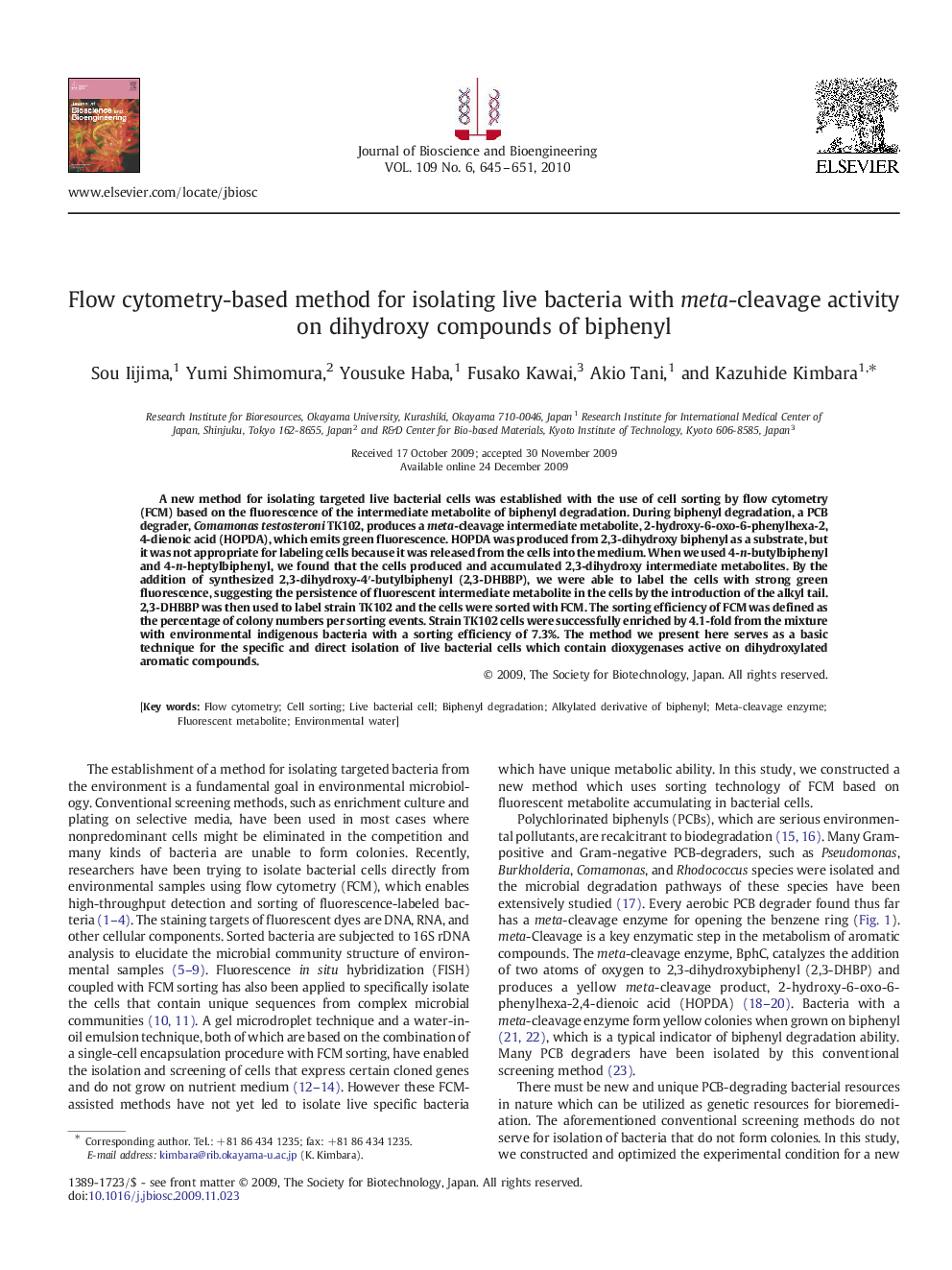| Article ID | Journal | Published Year | Pages | File Type |
|---|---|---|---|---|
| 21910 | Journal of Bioscience and Bioengineering | 2010 | 7 Pages |
A new method for isolating targeted live bacterial cells was established with the use of cell sorting by flow cytometry (FCM) based on the fluorescence of the intermediate metabolite of biphenyl degradation. During biphenyl degradation, a PCB degrader, Comamonas testosteroni TK102, produces a meta-cleavage intermediate metabolite, 2-hydroxy-6-oxo-6-phenylhexa-2,4-dienoic acid (HOPDA), which emits green fluorescence. HOPDA was produced from 2,3-dihydroxy biphenyl as a substrate, but it was not appropriate for labeling cells because it was released from the cells into the medium. When we used 4-n-butylbiphenyl and 4-n-heptylbiphenyl, we found that the cells produced and accumulated 2,3-dihydroxy intermediate metabolites. By the addition of synthesized 2,3-dihydroxy-4′-butylbiphenyl (2,3-DHBBP), we were able to label the cells with strong green fluorescence, suggesting the persistence of fluorescent intermediate metabolite in the cells by the introduction of the alkyl tail. 2,3-DHBBP was then used to label strain TK102 and the cells were sorted with FCM. The sorting efficiency of FCM was defined as the percentage of colony numbers per sorting events. Strain TK102 cells were successfully enriched by 4.1-fold from the mixture with environmental indigenous bacteria with a sorting efficiency of 7.3%. The method we present here serves as a basic technique for the specific and direct isolation of live bacterial cells which contain dioxygenases active on dihydroxylated aromatic compounds.
